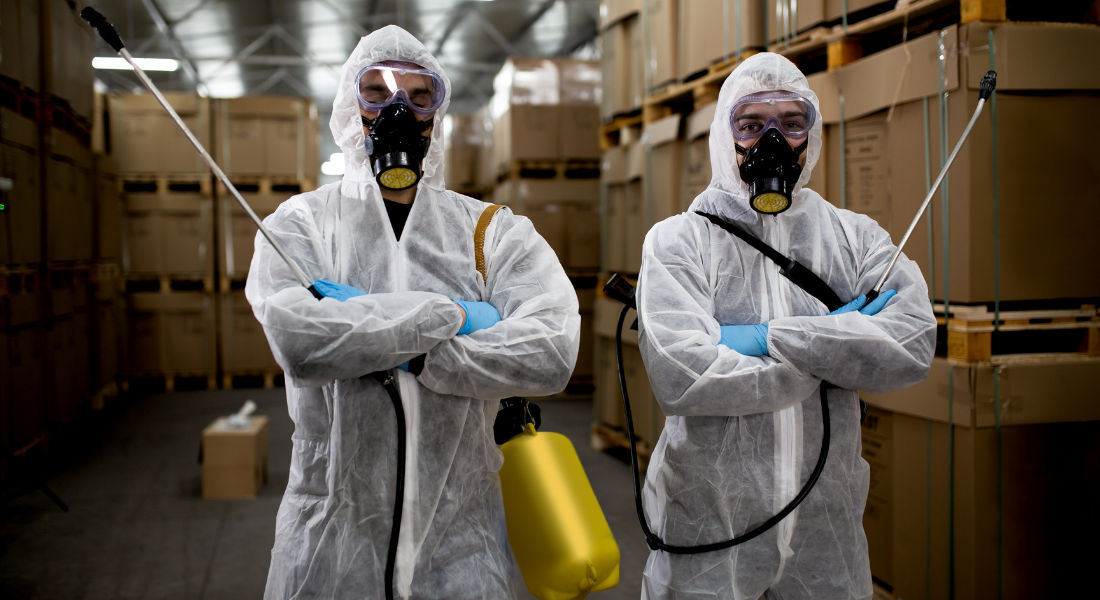July 22, 2025

The HSE inspector walks into your warehouse and heads straight for the cleaning cupboard.
Five minutes later, you're facing an improvement notice and potential prosecution. Your crime?
Failing to properly assess the risks from the everyday cleaning chemicals your staff use daily.
This isn't a rare scenario.
With average HSE fines now hitting aroun £97,000 and a 94% conviction rate for COSHH prosecutions, thousands of UK businesses are unknowingly breaking the law every day.
The truth?
Most companies using hazardous substances—from office cleaning products to manufacturing processes—have never conducted a proper COSHH assessment.
Here's what most employers don't realise: every £1 invested in COSHH compliance returns £2-6 in cost savings. Miss it, and you're risking fines and business disruption.
Here’s what you need to know to get it right.
A COSHH assessment is your legal obligation to identify, evaluate, and control risks from any substance hazardous to health.
It's not just about obvious chemicals—it covers cleaning products, dust from work processes, welding fumes, biological agents, and even substances created during normal operations.
Think of it as a health check for your workplace, but instead of examining people, you're evaluating how hazardous substances could harm your employees.
The HSE's 8-step process breaks down like this:
Here's a crucial mistake businesses make: thinking a Safety Data Sheet equals a COSHH assessment.
It doesn't.
The SDS tells you what's dangerous—the assessment tells you how dangerous it is in your specific workplace and what you need to do about it.
This applies far beyond heavy industry.
Offices using cleaning products, schools with science labs, care homes managing medications, and beauty salons handling hair chemicals all need COSHH assessments. If you use substances that could harm your health, you need one.
While it varies from industry to industry, there’s no denying that companies implementing comprehensive COSHH programs achieve higher ROI in terms of keeping employees safe and productive, while minimising problems like sick leave/pay and decreased retention.
However, the cost of ignoring it?
Direct enforcement costs can be a tough reality check:
But fines are just the tip of the iceberg.
Workplace injuries and ill-health cost UK businesses £20.7 billion annually, with employers bearing £3.5 billion directly. Poor COSHH compliance is a contributing factor.
And then there are the industry-specifics:
The bottom line?
COSHH isn't just compliance—it's a competitive advantage. While your competitors are dealing with enforcement actions, sick leave crises, and talent retention nightmares, you'll be running a lean, efficient operation where people want to work.
The businesses thriving aren't the ones cutting corners on safety—they're the ones who figured out that protecting their people protects their profits.
Your COSHH assessment isn't paperwork; it's your insurance policy against becoming another cautionary tale in the HSE's annual enforcement report.
The COSHH Regulations 2002 apply to every UK business using hazardous substances—no exceptions based on size or sector. This is criminal law, not civil regulation.
Key legal facts:
Post-Brexit, the landscape is evolving.
UK REACH implementation is adding £2 billion in industry compliance costs, while new chemical registration requirements create additional obligations for importers and manufacturers.
What triggers enforcement?
Documentation requirements are strict: General assessments must be retained for a minimum of 3 years after use ceases, while health surveillance records require 40-year retention for certain exposures.
Digital systems help manage this complexity, but compliance is non-negotiable.
The trick to successful COSHH in a way that works for you is to stop treating it like a compliance checkbox—they're your frontline defence against regulatory disasters and workplace health crises.
While your competitors are scrambling with paper-based systems and generic templates, smart businesses are leveraging purpose-built technology and systematic approaches to turn COSHH from a burden into a competitive advantage.
Here's how to implement assessments that protect your people and your bottom line:
Start with a comprehensive inventory. Don't just list what's in your chemical store—include process-generated substances like welding fumes, wood dust, and even cleaning products in office areas.
Small businesses (1-10 employees) typically need 10-20 hours for thorough identification.
Work systematically through each step, prioritising the hierarchy of controls: elimination first, then substitution, engineering controls, administrative measures, and finally PPE.
Don't jump straight to masks and gloves—that's often the least effective approach.
For straightforward situations, trained internal staff can conduct assessments using HSE templates. Complex processes may need specialist support.
Choose whether to train your own team to write COSHH assessments or have an industrial‑hygiene specialist handle it for you.
Step 4: Leverage technology for efficiency
Modern COSHH platforms can reduce assessment time while improving accuracy. Solutions like TAC Healthcare's iCOSHH platform are designed specifically for task-based risk assessments, empowering teams with instant access to critical chemical information.
Developed by industrial hygiene experts, these systems ensure efficient compliance and safety management, crucial for protecting employee health.
Technology benefits include:
Step 5: Establish monitoring and review
COSHH assessments aren't "set and forget." Establish triggers for review: process changes, new substances, incidents, or regulatory updates.
Local Exhaust Ventilation requires examination every 14 months—missing this is a common enforcement target.
COSHH assessments aren't a box-ticking exercise—they're strategic investments that protect your people while delivering measurable business returns.
With HSE enforcement intensifying and average fines reaching into six digits, proactive compliance isn't just smart—it can be essential for business survival.
Start by conducting a gap analysis of your current compliance status. Identify high-risk substances and processes for immediate attention. Invest in competent assessor training or specialist support, and consider technology solutions that match your organisation's complexity.
The best time to get COSHH compliant was when the regulations started. The second-best time is now.
Ready to protect your business and your people?
TAC Healthcare provides comprehensive COSHH assessment and platform services complemented by health surveillance programmes that transform how you stay compliant by keeping things simple.
Contact us to discuss how we can help you implement COSHH assessments that deliver real ROI. Because protecting your workforce isn't just the right thing to do, it's the profitable thing to do.